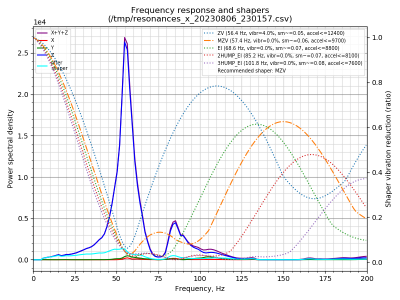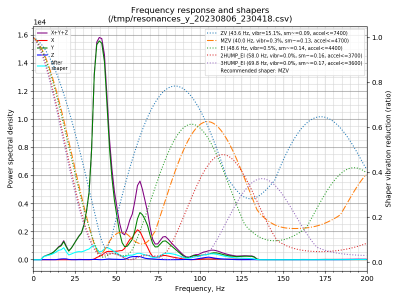Velychkin
New member
- Printer Model
- 2.4
- Extruder Type
- Clockwork 2
- Cooling Type
- Stealthburner
I've got Voron 2.4 300. Input shaper recommendations are nearly 9k on X axis and 4.5 on Y axis. Max accelerations according to ellis3dp guide is 30k. Is it OK to use accelerations higher than 4.5k (for example 10-15k) for travel moves, infill or even inner walls?



